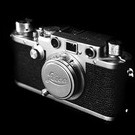Medium format quality? Test results: M10P vs. M10M vs Sony a7riv vs Phase One IQ4 with optimum lenses
-
Recently Browsing 0 members
- No registered users viewing this page.
-
Similar Content
-
- 50 replies
- 1,560 views
-
- 3 replies
- 299 views
-
- 77 replies
- 6,887 views
-
- 8 replies
- 548 views
-
- 0 replies
- 557 views
-






Recommended Posts
Join the conversation
You can post now and register later. If you have an account, sign in now to post with your account.
Note: Your post will require moderator approval before it will be visible.